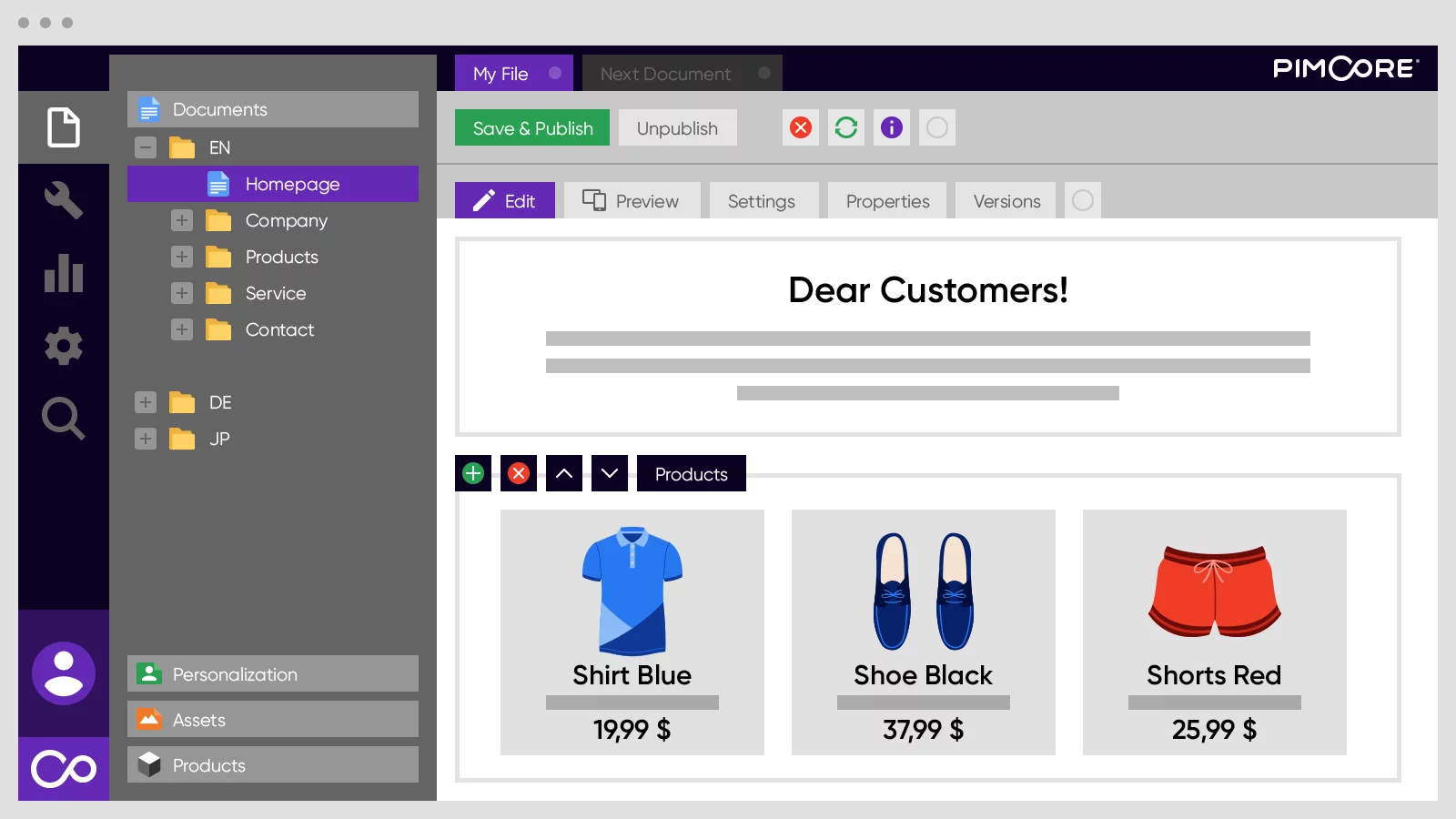8 reasons why PIM is essential to your marketing strategy
Free consultationTopics
Let's take a look at how a product information management (PIM) solution can enhance your company's marketing strategy.
Brands are increasingly shifting from single-channel to multi-channel (multichannel) marketing strategies, seeking to provide personalized customer experiences by easily deploying relevant product information at each user touch point. As brands define these touchpoints and build marketing campaigns around them, the customer experience is not necessarily connected across these channels. This creates the need for a centralized product information management solution that streamlines product attribute information, unstructured descriptions, images, videos, manuals, guides and related information.

Let's take a look at how a product information management (PIM) solution can enhance your company's marketing strategy.
Streamline digital and media resources
From images, videos and documents to presentations and related metadata, product assets need to be well managed and transformed into the right format for faster user access across multiple channels. Using a centralized product information system, companies can determine how their digital and media assets should be displayed and delivered across channels. Scaling and formatting data to the right format or file size, while creating metadata clearly tailored to each channel greatly automates many processes like publishing company assets in the right channel, at the right time and in the right format for future purposes without manually entering the same.
Accelerate seamless publishing across multiple channels
Due to the large number of output channels, it is difficult for organizations to manage content across multiple customer touchpoints. In this case, a PIM solution provides seamless management of any digital information and assets across multiple platforms, such as websites, microsites and even radio or TV. By creating a single product data repository for omnichannel publishing, organizations can automate the publishing of assets in the required formats to quickly meet the various data requirements, management rules and hierarchies in the output channels.
Manage the surge in product content
With an ever-expanding product catalog, organizations need to implement a centralized data repository to capture and market growing product content from multiple vendors and sales channels, such as SKUs, pricing, product descriptions, inventory and more. PIM helps organize, distribute and update this data - both in-house and off-site with distributors, trading platforms, retailers and other trading partners.
Provide relevant data to downstream partners
Combining defined product value with precise distribution channels, a comprehensive management solution ensures that product data is accurate, complete and presented in context for each channel. Data from systems such as ERP or MDM is ready for distribution to any sales channel, while effectively streamlining the distribution of relevant product information to downstream supply chain partners.
Give context to product information
Different markets require different versions of product information, including currency, metric values or delivery details. PIM helps organizations create and maintain multiple versions of product or asset information. These can be put into context based on channel, market, brand, customer segment or region. It provides channel-specific media formats and product descriptions without duplicating existing product data in the PIM system.
Channel behavioral data and digital analytics
With a unified system for viewing product data, companies can provide their marketing teams with a 360-degree view of their products. By implementing analytical tools across transactional, interactive and observational channels, PIM offers actionable insights into customer behavior parameters such as usage, pricing, volume and other metrics set by the team during campaign execution.
Eliminate manual errors and streamline operations
By implementing a single source of truth to manage product information, companies can spend less time manually checking for errors or reviewing collateral or sales materials to ensure accuracy and relevance. This in turn translates into a unified view of product assets across all channels, further freeing marketing teams from the time and cost constraints of managing multiple data sources.
Improve customer experience (CX)
Cataloging a diverse product portfolio is no longer enough to meet today's ever-changing customer needs. Companies need to further implement an advanced data management solution that streamlines product information, marketing collateral, and allows companies to manage every aspect of every product record created to accelerate product launches to get the latest products to customers first. This includes hierarchy, structure, validations, approvals, versioning and other related data components. This allows brands to launch new products with less effort, while responding to customer needs in real time.

Pimcore can provide more room for creativity and innovation for the marketing department, while freeing up the time teams spend on manual product data operations. This, in turn, helps empower marketing teams to succeed and increase overall agility in business results.